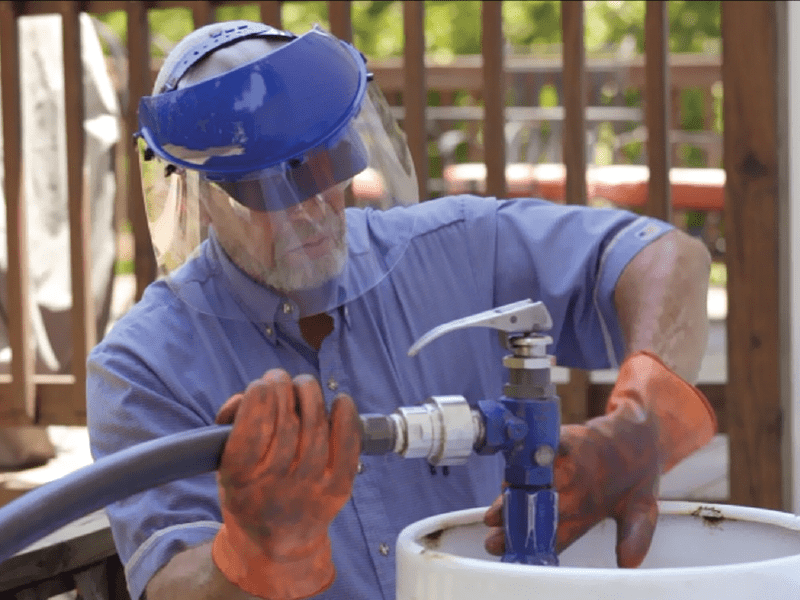Propane tank maintenance and propane tank inspections.
What should you expect when it comes to keeping an above-ground propane tank safe and functional over time? What are some of the propane tank inspection requirements and how often are those elements being looked at? These are all common questions from propane users, so we’re here to help with the answers!
Whether you lease a tank from AmeriGas, or have AmeriGas service one that you own personally, take comfort knowing that safety is our #1 priority. We always put your—and our own—safety first when it comes to ensuring that your equipment is secure, operational, and able to maintain the comfort of your home as it should!
Rest assured knowing we complete a visual propane tank inspection before every delivery and every service we perform on a propane system. In addition to this visual inspection, we also perform a documented pre-fill inspection every 5 years.
What would an average inspection include for an above-ground propane tank?
Our trained employees inspect the container, the system components, and the overall condition of any visible piping, as well as location and distance requirements involved in your tank’s safe operation. This includes checking:
- Container opening and distance requirements – Propane tanks must meet minimum distance requirements between container openings and any potential ignition sources, as well as minimum distance requirements from buildings and property lines.
- Container and base – We check to see if the container is in good condition with a base that is properly set.
- Valves – All valves should be free from damage and covered with a cap.
- Leaks – We inspect for any visual leaks on the container, which includes any signs of bubbling or oily residue. We also check for any sounds of pressure escaping or strong Mercaptan odors, which could also be signs of a potential leak. Should you ever notice signs of a leak, notify AmeriGas immediately.
Any issues detected with the above points of the visual inspection would need to be addressed and any necessary propane tank repairs made before it would be considered safe to fill the tank.
What to expect as part of a visual tank inspection
Below are some additional components we check for as part of our visual inspection, and while they may not prevent you from getting your fill on the spot, they would need to be serviced to remain in compliance with codes and prevent system failure, which could occur if left unaddressed.
- Regulators – Confirm that regulators are installed correctly.
- Container – We inspect the condition of the paint and decals on the container. The dome or lid of the container must be present and possess sufficient protective coating to protect the base material. The tank must also be properly labeled, according to the requirements of your municipality.
- Relief Valve – The relief valve must have an approved cover and the weep hole must be clean and clear of any debris.
- Piping Security – We visually inspect that piping is installed properly. This includes ensuring that underground piping is completely buried, piping that runs along any walls is properly secured with appropriate hardware, piping that runs through exterior walls is protected by a coating, wrapping or sleeving, and that the opening to the wall is sealed to prevent insects or rodents from entering. In heavy snow volume areas, we visually inspect for additional protections like approved snow covers necessary to protect piping and regulators installed under the eaves.
- Piping Installation – We also check to see that approved piping materials are used, and that they remain undamaged. Proper fittings must be in place, and piping cannot be crimped or twisted.
If a potential problem is identified during the propane tank inspection, service may be necessary to remedy the issue. If you own your propane tank and any risks are identified during these visual inspections, a service quote or fee may be applicable.
As a homeowner, there are additional things you can do to keep your propane tank safe and in good condition, including keeping the area around the propane tank clear of debris. You can find more tips on keeping your propane-powered property safe and well-maintained here.
Now that you have a better understanding of the wide range of safety considerations taken into account with propane tank inspections during every fill and service appointment, we hope that you find peace of mind in the vast training, knowledge, and experience of the AmeriGas team. Your safety and that of your home are our top priority. We are proud to be trusted with the responsibility and look forward to keeping you secure and comfortable into the future!
Propane Safety Go to blog list page filtered for the category

